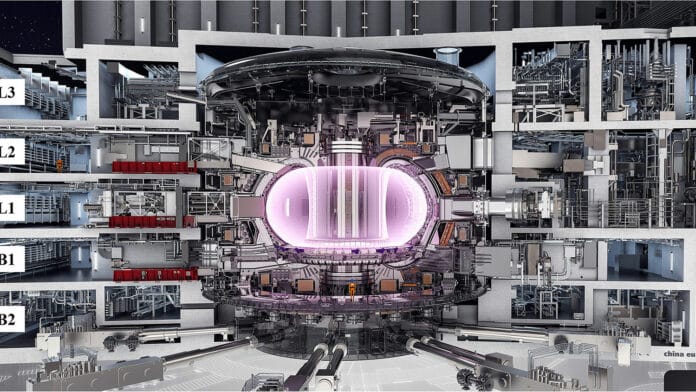Japan’s Nippon Telegraph and Telephone Corporation (NTT) is implementing an AI-powered anomaly prediction technology, originally designed for telecom networks, to detect anomalies in experimental fusion reactor equipment at an early stage. This will potentially prevent equipment failure and ensure smooth experimental operation.
The work is currently being done in partnership with the International Thermonuclear Experimental Reactor (ITER) research project.
As the world strives towards achieving carbon neutrality in response to environmental issues such as climate change, there is an increasing need to create new clean energy sources, and efforts to achieve this are gaining momentum.
In May 2020, NTT signed a strategic cooperation agreement with the ITER Organization to accelerate the creation of innovative environmental energy technologies and to contribute to reducing the environmental impact on customers, businesses, and society.
They teamed up for “Experiments on Anomaly Prediction in Experimental Fusion Reactor Equipment.” The main goal was to prevent equipment failures and ensure the smooth operation of fusion experiments.
Early detection of equipment anomalies is deemed necessary to avoid downtime and the time-consuming process of equipment repair, especially in a high-intensity, high-volume neutron or gamma-ray radiation environment.
Traditionally, equipment anomaly detection is based on a single value exceeding a threshold, which is not always effective. If an anomaly is detected at this timing, the equipment could fail immediately, making it difficult to continue the experiment due to the time required for recovery.
To address this issue, NTT developed a technology called Deep Anomaly Surveillance (DeAnoS), which uses multiple types of data correlation to predict future anomalies at an early stage. This approach enables the detection of anomalies at an earlier stage than single data detection.
DeAnoS utilizes autoencoders (AE) for the purpose of early detection of changes in the state of ICT systems. The AE used in DeAnoS is a type of deep learning that enables the learning of complex structures inherent in data. When an anomaly is detected by AE, a technology that uses sparse optimization can be applied to estimate which input dimension caused the high degree of anomaly, which is expected to improve the efficiency of isolation work after detecting an anomaly.
The team has been studying the applicability of DeAnoS to experimental fusion reactor equipment in cooperation with the ITER Organization. ITER provides a place to check everything and give feedback on the results, while DeAnoS provides anomaly prediction technology to study data and predict issues within the equipment.
The experiment consists of two main parts: first, they’re testing if the technology works for different devices other than circulation pumps, and second, they’re studying data to predict issues within the equipment.
The results of this joint experiment will help determine the feasibility of using anomaly prediction technology as a maintenance tool for experimental fusion reactor equipment and explore the possibility of expanding the system to large-scale systems such as plants.
